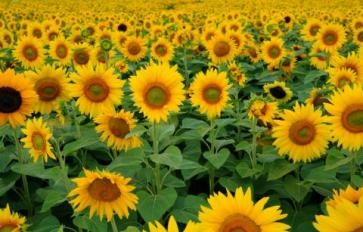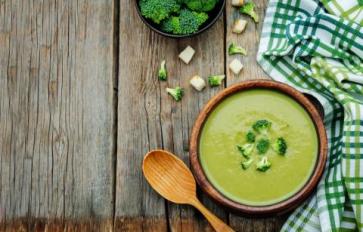
I love to garden even though I only have a small windowsill garden. That said, any space for gardening can utilize organic fertilizers! I only give my plants the best of the best, and these are all very easy to make at home. Here are three homemade organic fertilizers you can use on your plants ASAP.
Why should I use organic fertilizers?
Before I dive into the three homemade organic fertilizers I’ll be sharing with you today, it’s important to explain why you should use them. Conventional fertilizers sold in most stores are full of questionable ingredients that harm the very soil they go into. When we use fertilizers that contain harsh chemicals, they can really create an imbalance in the soil. Sometimes, it gets so bad that the soil won’t grow anything new without toxic chemical fertilizers being sprayed onto it. Your soil doesn’t need this at all: Nature provides everything your garden could possibly ever want. Organic fertilizers work just as well, if not better, than conventional ones. They also don’t mess up the natural microbe population in the soil or cause long-term harm to the environment.
It’s also important to note organic fertilizers are basically slow-release food. They take time to break down and nurture the soil with macronutrients, but they always get it done better than synthetic fertilizers. Unfortunately, most people are impatient and want results very quickly, so they opt for the synthetic, quick-acting fertilizers that hurt the soil over time. I encourage you to break away from this and express patience with your garden. Results don’t have to happen overnight to be effective.
Just make sure there are no weeds surrounding your plant before feeding them your fertilizer: You don’t want them growing stronger from your organic fertilizer, that’s for sure. Cleanup the area by removing all the weeds, tilling the topsoil to get to the roots of the weeds so they cannot grow back.
Also, one last thing to consider is not every plant will enjoy every single one of these fertilizers: It all depends on what the plants need. If you want the plant to have lush leafy greens, a fertilizer with nitrogen (such as coffee grounds) is good for it. Want leafy greens, pest-resistance and blooms? Give your plants a fertilizer that will provide a balance of nitrogen, potassium, and phosphorus, such as eggshell tea (listed below). Without further ado, lets dive into three amazing organic fertilizers!
Eggshell Tea
My houseplants absolutely love this homemade organic fertilizer. I have a pothos and a jade succulent plant that adore it. If your family loves eating eggs, this is a great way to use up eggshells before composting them. It makes for a lovely treat for both indoor and outdoor plants. Eggshells contain calcium carbonate. Once they’re steeped (hence the name eggshell tea), they can add calcium, potassium, phosphorous, sodium, and magnesium to the water. How cool is that?
To make some eggshell tea, grab some eggshells and put them in a glass jar. If you have a lot of eggshells, using a bigger glass jar is a good idea, but usually four to six eggshells can fit in a 16-ounce mason jar. Cover the shells in boiling hot water and leave them to steep overnight. Keep the jar wherever you’ll remember it. Strain the shells in the morning, making sure to compost them, and pour the resulting tea right over the plant’s soil. That’s it! If you’d like, you could also grind up the eggshells into a fine powder, mix it with Epsom salt, and add it to your plant’s soil in place of composting the remaining shells. Either way, your plants will thank you!
Banana Peel Fertilizer
Bananas are an excellent source of potassium, as most people know, but did you know their peels are too? Obviously, I’m not encouraging you to eat the peels, but they certainly are a great treat for your potassium-loving plants. Banana peels have a 42 percent potassium rate, making them even higher in potassium than wood ash. They don’t contain nitrogen though, which means this fertilizer is perfect for tomatoes and peppers (they have a low nitrogen need). Banana peels also contain calcium, manganese, sodium, magnesium, and sulfur, all of which provide health benefits to your plants.
To make some banana peel fertilizer, all you have to do is add one or two bananas to a glass jar, fill it up with water, and let it sit for about a week. It’s similar to making eggshell tea, but it takes a little more time. (Make sure any produce stickers on the bananas are removed before doing this, obviously.) Whenever possible, try to use organic bananas for this fertilizer for the best effects. When the banana peels have steeped for about a week, you can open up the jar and remove the peels, making sure to compost them. You can also bury the banana peels near your potassium loving plants for added benefits. The leftover infused water is what you’ll feed your plants. Add it directly to their soil—it can count towards their watering, or just be an extra treat for them.
Coffee Grounds
This particular fertilizer is pretty simple. You technically don’t have to prepare it as much as the other ones listed. All you have to do is make a cup of coffee like you normally would, but hold onto the coffee grounds. Don’t throw them out (you technically never should—you can compost coffee grounds). This time around, save them and place them straight into your soil. If you have houseplants, sprinkle them into the pots. If you have a garden, sprinkle them over your plants’ soil beds. They’ll actually add nitrogen to the soil over time. You can use a tool, or your hands, to work the coffee grounds into the soil so it mixes better. Other than that, that’s pretty much all you have to do. Just let them work their magic from there!
Want more organic fertilizers? Here are seven natural fertilizers for your garden to also consider.








